-
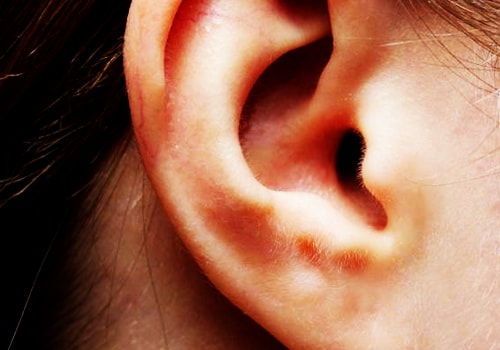
What is hearing loss?
Hearing loss is the total or partial inability to hear sound in one or both ears.
-
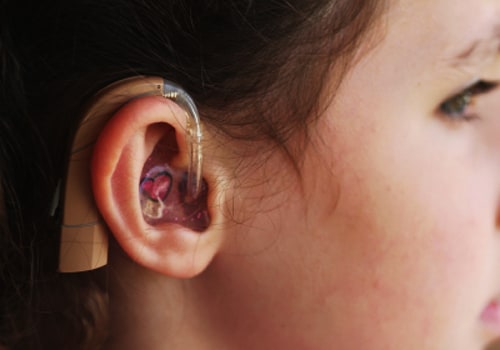
What are the types of hearing loss?
Hearing loss can be divided into 3 categories:
Conductive hearing loss: occurs because of problems in the middle ear. In a normal ear, the sound hits on an intact eardrum (like hitting a dholak). Three small bones work as a lever mechanism to increase the movement, and the third bone (stapes) works as a piston to convey this amplified vibrations to the fluid system of the inner ear. Some mechanical problem, such as fluid in the ear, perforation of the eardrum, or damage to the lever mechanism of the three bones which amplify the sound, or fixity of the eardrum or the bones or piston or new bone formation may result in a hearing loss, where the amplified sound is not reaching the inner ear. However, if the inner ear is stimulated directly by the bone, the nerves, hearing organ and hearing is normal. This is called conductive hearing loss. This is often reversible, and may be corrected by surgery.
Sensory-Neural hearing loss: Here there is a damage to the inner ear (sense organ), or damage to the auditory nerve which conducts the signals to the brain (Neural Hearing Loss) These occur when there is physical or other damage to the end organ or the nerve. Mostly sensory-neural hearing loss is not reversible (except for sudden onset hearing loss due to certain causes). No surgery can correct this loss and a hearing aid is the only solution. Sudden onset sensory-neural hearing loss can be due to a viral infection, or a “mini stroke”: blockage of blood supply. This can be reversed by urgent medical management.
Mixed hearing loss: Is a combination of conductive loss, with sensory-neural loss also present. The conductive part may be correctable.
Screening for hearing loss is now recommended in all newborns. In children, hearing problems may cause speech to develop slowly, along with other learning handicaps. By early screening, congenital hearing loss (sensory-neural hearing loss present from birth) can be detected early and suitable measures like Hearing aids, or cochlear implantation can be done at an early age, so that the child does not also become mute. In childhood, ear infections are the most common cause of temporary hearing loss. Fluid can linger in the ear following an ear infection. Although this fluid can go unnoticed, it can cause significant hearing and learning problems. Any fluid that lasts longer than 8-12 weeks is cause for concern, and needs to be treated by a minor surgery to drain the fluid. -
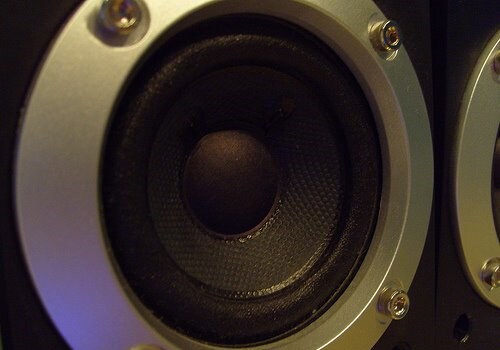
What are the causes?
Common causes of hearing loss with type of hearing loss:
- Genetic: sensori-neural
- Congenital or birth defects: sensori-neural, or fixation of the ossicles (conductive)
- Infections: mainly conductive, maybe sensori-neural
- Traumatic: mainly conductive, maybe Sensori-neural (especially bomb blasts)
- Toxic: sensori-neural
- Age-related: sensori-neural (presbiacusis)
- Occupational: sensori-neural
Temporary hearing loss (Conductive Hearing Loss) can also be caused by:
- The build-up of wax in the ear canals (hard wax can cause up to 40% hearing loss)
- Foreign body lodged in the ear canal
- Injury to the head
- Allergy
- Blocked Eustachian tubes
- Scarred or perforated eardrum
- Ear infections, often after a cold
- Reaction to medications such as aminoglycosides, chloroquine, quinidine (sensori-neural)
- Genetic: sensori-neural
-

What are the symptoms?
Signs and symptoms of hearing loss may include:
- Muffled quality of speech and other sounds
- Difficulty understanding words, especially against background noise or in a crowd of people
- Asking others to speak more slowly, clearly and loudly
- The need to turn up the volume of the television or radio
- Withdrawal from conversations
- Avoidance of some social settings
- Discharge from ears due to infections
- Blockage of ears
- Buzzing/ringing sounds in the ears (may feel hearing is normal, but there is a loss at some frequencies)
- Giddiness/vertigo may be associated with hearing loss
- Poor academic performance in children without any reason
- Speaking loudly/ or in a very low tone (depending on the cause)
- Muffled quality of speech and other sounds
-
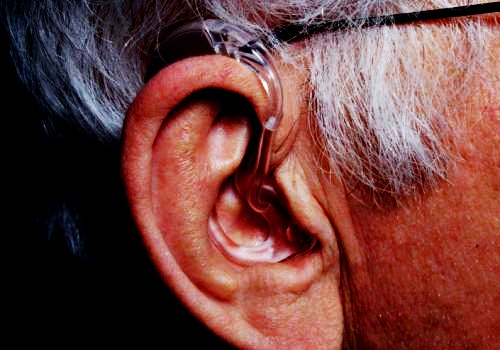
What are the risk factors?
Factors that may damage the inner ear include:
- Ageing: Presbiacusis. Normally over 60 years, some hearing loss especially at higher frequencies starts. The normal wear and tear of sounds over the years can damage the inner ears cells.
- Loud noises: Occupational noise, such as construction or factory work, and recreational noise, such as loud music in concerts, the engine of a snowmobile or motorcycle, airplanes, can contribute to the damage. Sudden Loud noises, like bomb blasts, or even Diwali Crackers, can cause sudden and permanent hearing loss.
- Heredity: The genetic makeup may make one more susceptible to ear damage. The age related hearing loss may also start earlier.
- Medicines: Ototoxicity, drugs such as the antibiotic gentamicin can damage the inner ear. Temporary effects on ones hearing - ringing in the ear or hearing loss can occur if one takes very high doses of aspirin.
- Some illnesses: Diseases or illnesses that result in high fever, such as meningitis, may damage the cochlea. Viral diseases like mumps, and measles can also result in deafness.
- Ageing: Presbiacusis. Normally over 60 years, some hearing loss especially at higher frequencies starts. The normal wear and tear of sounds over the years can damage the inner ears cells.
-
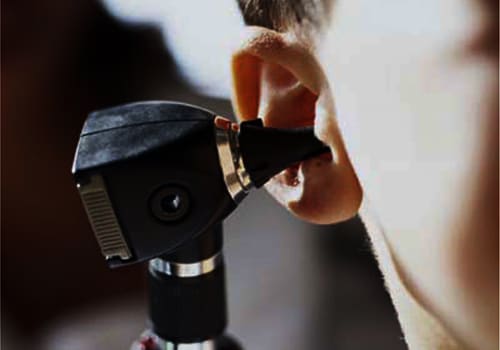
How is it diagnosed?
To determine ones ability to hear and the extent of hearing loss, the doctor may administer a hearing audiometry test. At first, he may conduct a general screening test to get an overall idea of how well one can hear. He may ask the patient to cover one ear at a time to see how well he hears words spoken at different volumes and how he responds to other sounds. Tuning fork tests are carried out, which indicate the type of deafness and which ear is more affected.
During a more thorough test called audiometry, the patients are asked to wear earphones and hear sounds directed to one ear at a time. The audiologist presents a range of sounds of various tones and asks him to indicate each time he hears the sound. Each tone is repeated at faint levels to find out when the patient can barely hear. This is carried out for both Air Conduction and Bone conduction.
Tympanometry confirms the presence or absence of fluid behind the eardrum, and the normalcy or otherwise of the movement of the eardrum and the ossicles, accoustic reflexes also help in determining the type of hearing loss.
Special Hearing tests, including speech tests and recruitment give an idea if the hearing loss is sensory or neural. BERA (Brain stem evoked Audiometry) shows the normality or otherwise of the hearing nerves, and indicate the site of damage.
The various diagnostic tests include:- Audiometry (an electronic hearing test)
- Speech audiometry with special tests,
- CT/MRI scan of the head (if a tumour or fracture is suspected)
- Tympanometry
- Caloric test/ENG
- Evoked response audiometry (BERA)
- Audiometry (an electronic hearing test)
-
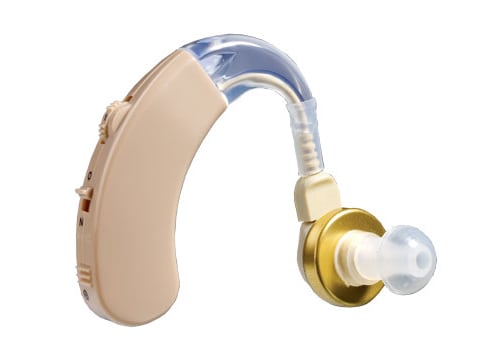
What is the treatment?
The treatment of hearing loss depends on the cause. If hearing loss is due to damage to the inner ear, the only treatment is a hearing aid.
Hearing aids
The doctor can discuss the potential benefits of using a hearing aid. Hearing aids cannot help everyone with hearing loss, but they can improve hearing for many people. The louder sounds help stimulate nerve cells in the cochlea so that one can hear well. Getting used to a hearing aid takes time. The sound one hears is different because it is amplified. One may need to try more than one device to find one that works well. Hearing aids come in a variety of styles. Some hearing aids rest behind the ear with a small tube delivering the amplified sound to the ear canal. Other styles fit in the outer ear or within the ear canal.
Earlier hearing aids used to amplify all frequencies of sounds equally, and often the patient would complain of discomfort, and excessive noise, especially in noisy surroundings like parties or meetings. The newer Digital hearing aids amplify sound according to the frequencies, which are affected, and so are not uncomfortable in these situations. They are computer controlled, and can be adjusted according to the patients individual situations.
If one cannot hear as well as one used to because of wax blockage, the doctor can remove the wax and improve hearing.
The doctor may remove the earwax by loosening the wax. He uses an eyedropper to place a few drops of baby oil, mineral oil or glycerin in the ear to loosen the wax, then squirts warm water into the ear using a bulb syringe. As one tilts the ear, the water drains out. The doctor may need to repeat the process several times before the wax eventually falls out. Alternatively, the doctor may loosen the wax, then scoop it out with a small instrument called a curette. Wax softeners may be needed if the wax is hard and impacted. The doctor may ask the patient to use these drops for a few days at home, and return to suck/syringe out the wax. In case one uses a bud to try and remove this wax at home, it will only result in pushing this hard impacted wax further inside, and cause more pain and blockage, beside making removal more difficult. Some people tend to form hard wax, and need this attention intermittently. For most people, gently cleaning the external part of the ear canal with a bud after using olive oil or substitute is adequate. Do not use sharp instruments to remove wax or foreign bodies
Surgery for deafness
Myringoplasty, Tympanoplasty, Ossiculoplasty and Mastoidectomy. Stapedectomy: If there is a perforation in the eardrum, it can be repaired by a minor surgery. One takes the Donor graft from either behind the ear (Temporalis Fascia), or from the soft part in front of the ear (Tragal perichondrium), and by either working through the ear canal, or by making a cut behind the ear (depending on training and expertise). The surgeon repairs the eardrum (Myringoplasty). If the lever mechanism (3 bones) is also damaged, this is repaired by using either cartilage, or bone, or an artificial prosthesis (Tympanoplasty/Osiculoplasty). If the bone behind the ear is also destroyed, and there is danger of the infection spreading to the brain, or affecting the nerves, then a more serious surgery, Mastoidectomy, needs to be done where all the diseased bone is cleaned. In case the last lever bone, which is the piston (Stapes), is fixed by new bone formation, a very delicate surgery, Stapedectomy is needed, but there is a small risk of causing further damage to hearing in this surgery.
Cochlear implants
In case there is no useful hearing, even with the best hearing aids, and especially where the hearing has been lost after speech development is complete, cochlear implantation can be considered. In this surgery, electrodes are inserted into the inner ear, and the hearing aid (speech processor) fitted behind the ear thus sends electrical signals straight to the hearing nerves. This is not suitable if the nerve itself is damaged. The implant is very expensive (the whole process costing a few lakh rupees) and has its own share of complications. It should only be considered in the specific indications.

















